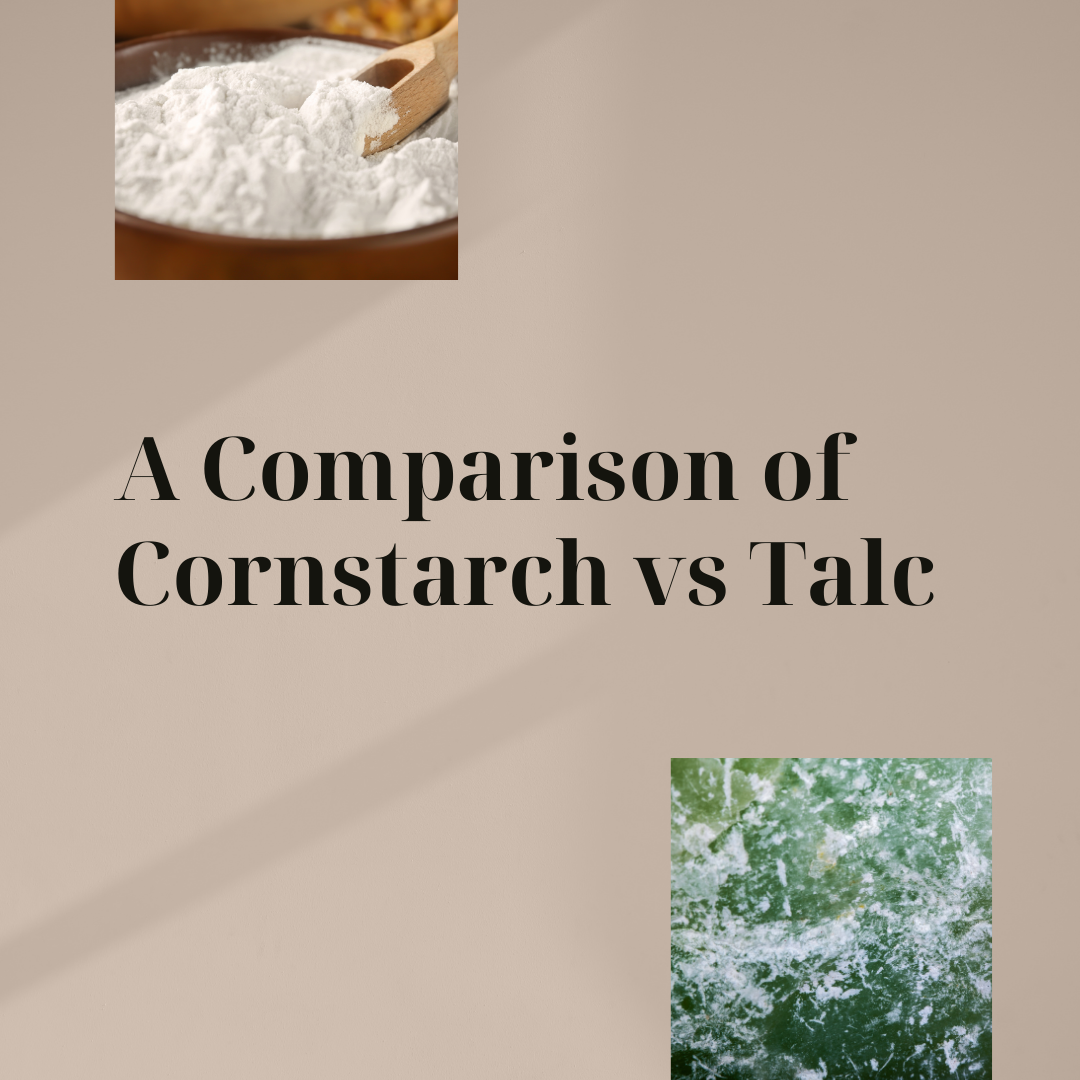
A Comparison of Cornstarch vs Talc
Share
In the world of personal care, particularly when it comes to preventing moisture and chafing, two powders have traditionally dominated the scene: cornstarch and talc. These dusting powders are widely used in products like baby powder and adult body powders, but what are the differences between the two? In this article, we’ll explore the pros and cons of both cornstarch and talc, helping you decide which might be the better option for your needs.
Understanding the Basics
What is Cornstarch Powder?
Cornstarch is derived from the endosperm of corn kernels. It's a starch that is commonly used in cooking as a thickener but has found a place in the personal care industry as a natural moisture absorber. Cornstarch powders are often recommended for those with sensitive skin, particularly for babies, as it is generally gentler than talc.
What is Talc?
Talc is a mineral made up primarily of magnesium, silicon, and oxygen. It has been used for over a century in various personal care products due to its ability to absorb moisture and reduce friction. However, talc's safety has been the subject of scrutiny due to concerns about asbestos contamination and potential health risks.
Comparing Effectiveness
When it comes to absorption, both cornstarch and talc are effective at keeping skin dry. Talc has traditionally been favored for its smooth texture and higher moisture-wicking properties. Cornstarch, on the other hand, is often preferred by those looking for a natural alternative. It is less astringent than talc, which may make it more suitable for dry or sensitive skin types.
Health Considerations
by Peter Wendt (https://unsplash.com/@peterwendt)
The health implications of using talc have raised concerns, especially in relation to women's health. Some studies have found a correlation between long-term talc use in the genital area and an increased risk of ovarian cancer. This has led to a closer examination of talc products and a surge in demand for talc-free options, such as those made with cornstarch.
Cornstarch is considered safe for most people, but it isn't entirely without risks. For instance, it can exacerbate yeast infections in those who are prone to them because the yeast can feed on the starch.
Environmental Impact
Cornstarch is a renewable resource, which gives it an environmental edge over talc. Talc mining can have a significant environmental footprint, especially if not managed responsibly.
The Verdict
When choosing between cornstarch powder vs talc, it's essential to consider your specific needs and any health concerns. If you're looking for a natural and potentially safer alternative, cornstarch powder may be the right choice. For those who prefer the silky texture and high absorbency of talc, it's crucial to use it responsibly and stay informed about the latest health research.
Regardless of your choice, always opt for high-quality products from reputable sources to ensure safety and effectiveness. And, if you have any concerns about how your skin reacts to these powders, consult with a healthcare professional or dermatologist.
In the quest for a suitable dusting powder, whether it's for diaper changes or personal hygiene, understanding the differences between cornstarch and talc is key. By considering the factors above, you can make an informed decision that aligns with your health priorities and personal preferences.

